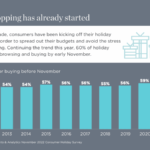Monthly Archives: October 2023
Small town retail topics from IEDC conference: getting owners to improve their buildings, recruiting chain groceries and supporting local retail startups
I’m sharing notes from sessions and conversations at the International Economic Development Council annual conference in Dallas. First up: Retail! Lacy Beasley of Retail Strategies moderated a panel on retail real estate and development. While it was mostly big city stuff, several topics were relevant for smaller towns. How to convince a property owner to […]

I’m sharing notes from sessions and conversations at the International Economic Development Council annual conference in Dallas. First up: Retail!
Lacy Beasley of Retail Strategies moderated a panel on retail real estate and development. While it was mostly big city stuff, several topics were relevant for smaller towns.
How to convince a property owner to reinvest in their retail strip, center or even one building in a small town
Herb Weitzman, a Dallas area retail developer, said that many retail real estate owners think ‘we’re not making any money so we can’t invest in our store or our shopping center.’
As a former rural retail store owner, I certainly recognized that small town, small business attitude.
However, Herb said that much like investment in remodeling and modernizing a retail store will increases its sales, it will also increase overall sales and the corresponding rents for retail centers. It’s possible that this is the right motivation to get some owners to act.
Small, rundown retail spaces can actually be a good long-term investment, Herb said. Buy them, fix them up and get a return.
For a small town, maybe it’s possible to find an outside investor who will purchase the rundown spaces, or to organize a coalition or cooperative of local investors to take it on.
One municipal official from a town of 50,000 people said they need to revitalize a dilapidated shopping center, but the owner will not reinvest in it. How can the city take a role?
Herb said that city governments often come to him to point out a possible deal, like revitalizing an existing center. They will help facilitate grant applications and other incentives to make the deal work.
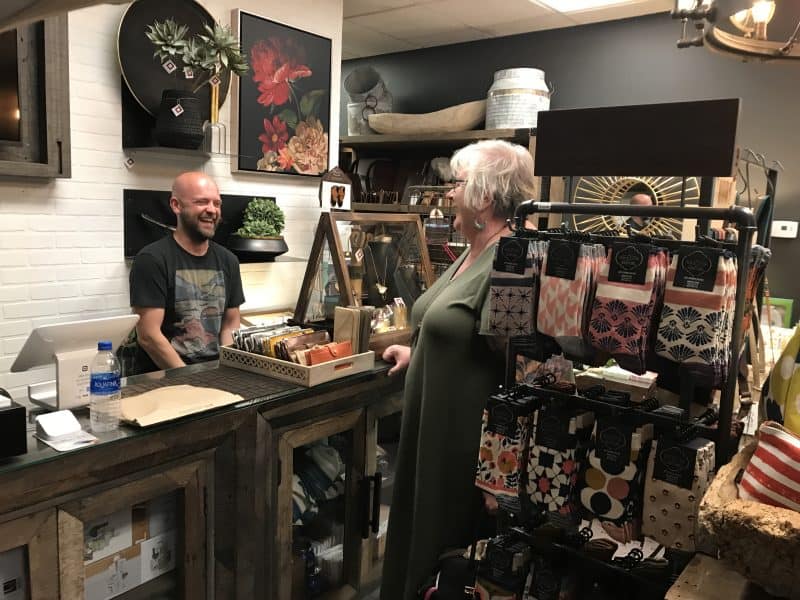
Local retail stores are key to rural and small town economic development. Photo by Becky McCray
Small town retail recruitment strengths: friendly, quick permitting
Herb said he likes working with “micromarkets,” which I took to be at least close to micropolitans with 10,000 up to 50,000 population. They are much smaller and much friendlier. You can sit down with them and work things out.
And that’s your hidden secret as a small town: you’re small, you work with people personally, and you’re friendly.
Panelist Christopher Walker with Raising Cane’s Chicken Fingers said that retail deals are taking longer in the 2020s, especially permitting. It takes them an average of 370 days in the western US to get a permit, 203 days in central US, and 320 days in the east.
One store started in 2020 took until 2023 to permit, Chris said. All that time, stores or restaurants are paying “dead rent” for space they can’t do anything with. Many times they have employees hired, but waiting and doing nothing.
Those numbers shocked me. How long does it take for your small town to issue a retail permit? A week or two? Maybe a couple of months at the most? Start considering that a competitive advantage. And be sure you are extending just as much support to locally-owned retail stores as you would to a chain you would recruit.
Recruiting chain grocery stores
Another audience member said that their grocery market is considered saturated in a retail study, but the stores they have are dirty and under-stocked. How can she tell that story to recruit a new grocery retailer?
Rita Williams with Kroger said to work through a retail broker if you want to recruit a national brand. The national chain retail grocery recruitment process takes 3 to 5 years from start to store.
If existing stores are being neglected by their chains, try to find out if any of those existing stores are planning to pull out, Rita said. That additional information may help get a retailer to look past the “saturated market” label.
Knowing that an existing store plans to pull out is critical for small town and rural markets. You may only have one store, and you will want to act immediately to organize a cooperative or community-owned grocery.
Importance of local retail
Find out what the community wants before acting, Rita said.
It feels obvious, but too often local leaders are pressured into quickly making large investments in retail recruitment or supporting an outside chain.
If you want to save your town, start your own small business.
If you want more reports from IEDC or more practical information for small towns, subscribe to SmallBizSurvival.
October is the new December: Shop early, shop indie local
Heads up, rural retailers: holiday shopping has already started! Guest post by Jen Risley, AMIBA Why promote Shop Indie Local early this holiday season? Because more of us are shopping early for holiday gifts. From National Retail Federation: Over the last decade, consumers have been kicking off their holiday shopping early in order to spread […]
Heads up, rural retailers: holiday shopping has already started!
Guest post by Jen Risley, AMIBA
Why promote Shop Indie Local early this holiday season? Because more of us are shopping early for holiday gifts.
From National Retail Federation:
Over the last decade, consumers have been kicking off their holiday shopping early in order to spread out their budgets and avoid the stress of holiday shopping. Continuing the trend [in 2022], 60% of holiday shoppers started browsing and buying by early November.
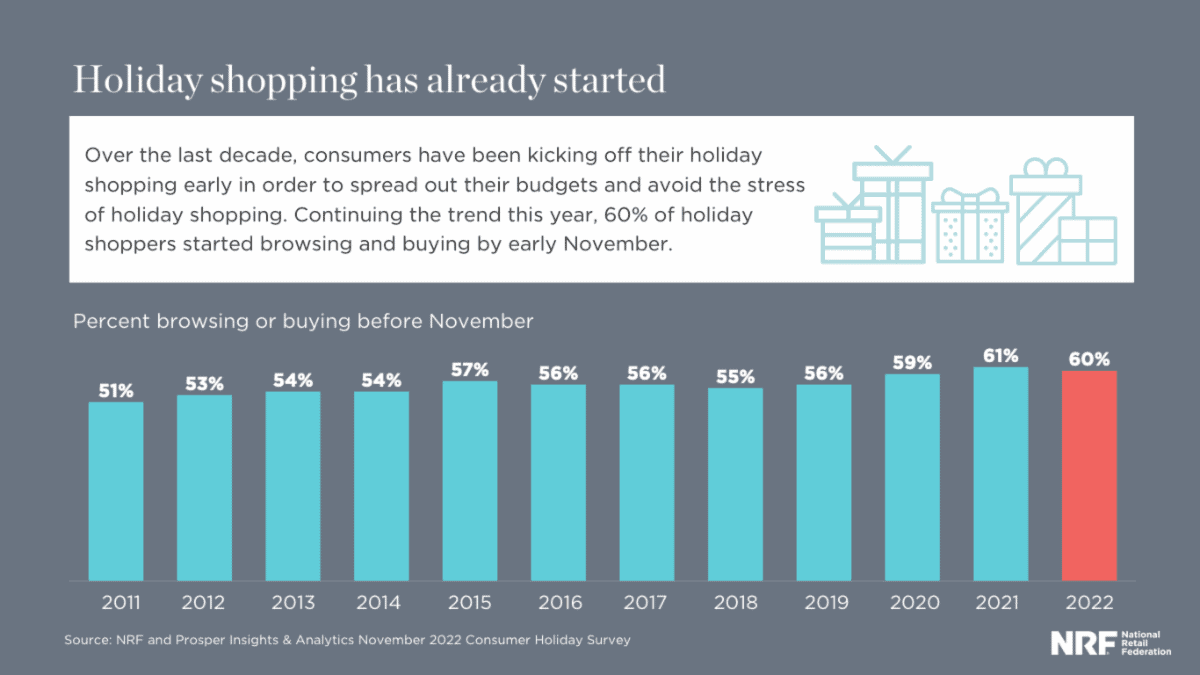
How to say it in your small business marketing
A good message to share with customers is something along the lines of “Let’s ensure that independent businesses have strong end-of-the-year sales by supporting them now.”
Here are some ways they can support not just your business, but all your local independent colleagues:
- Pre-order gifts and supplies today
- Buy a gift card
- Support local fundraising campaigns
- Donate to your community’s Independent Business Alliance
- Share on social media how much you love locally owned businesses (tag your post with #shopindielocal)
- Adapt and share these posts on social media
A huge thank you to the American Booksellers Association for creating the October is the New December campaign to boost the Shop Early, Shop Local message. Check out their campaign here.
Make your own social media graphics with the “Shop Early, Shop Indie Local” message, like this one from the American Booksellers Association:
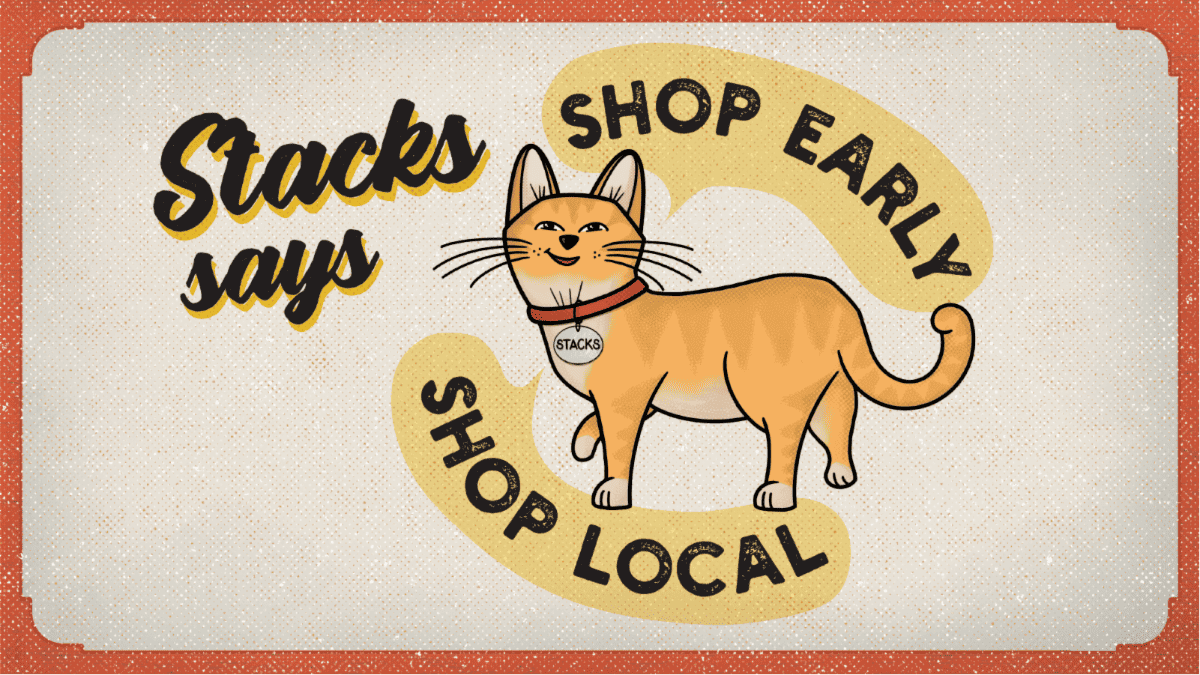
Stacks the bookstore cat says shop early, shop local.
Subscribe to SmallBizSurvival for more Shop Indie Local updates throughout the holidays.
Turn free advice requests into paying clients
Years ago, Thursday Bram asked me some questions about how freelancers and other consulting and professional folks can avoid giving away too much of their knowledge for free. Her article at Freelance Switch is no longer online, so I thought it was time to share it here, as well. Here’s some of my best advice […]
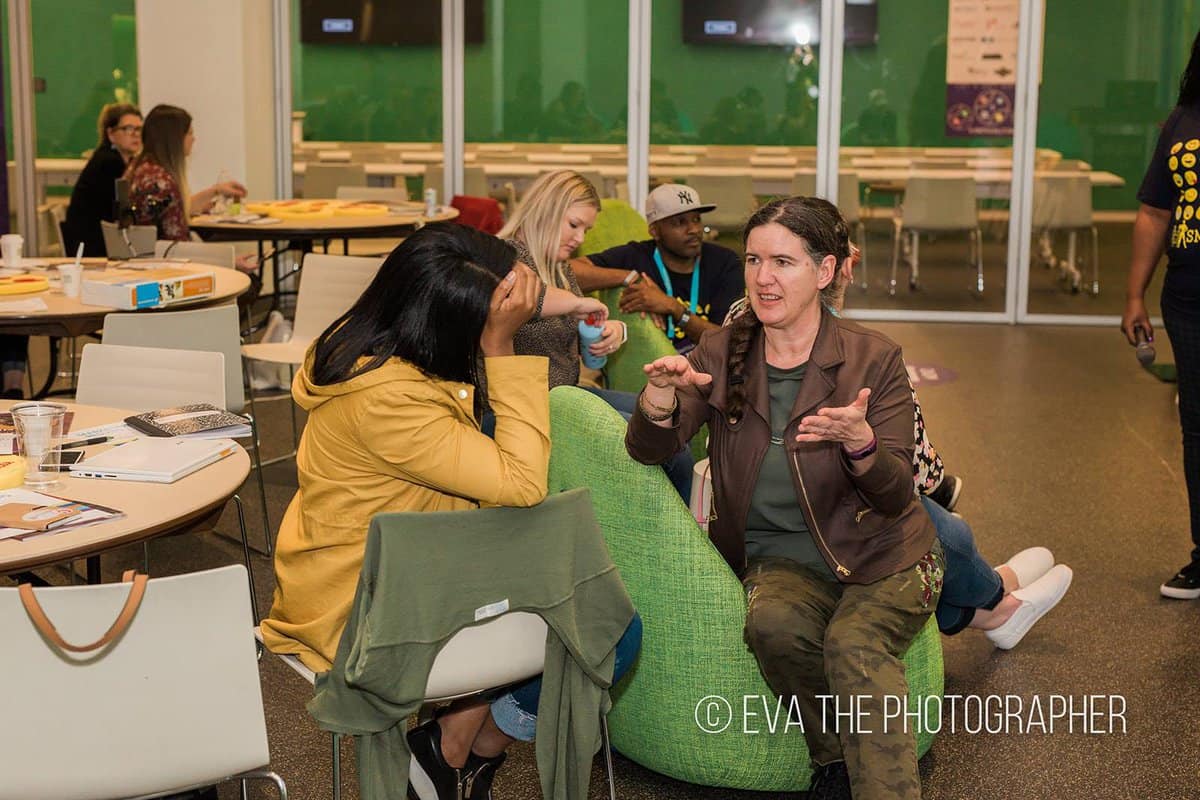
If we meet at a conference, I’ll be happy to give you some of my time. If you need more help, then it may be time for a coaching call. Photo (C) Eva the Photographer, courtesy of SMTulsa.
Years ago, Thursday Bram asked me some questions about how freelancers and other consulting and professional folks can avoid giving away too much of their knowledge for free. Her article at Freelance Switch is no longer online, so I thought it was time to share it here, as well.
Here’s some of my best advice on how to draw the line between free and paid conversations.
What is your reaction when someone asks to just ‘pick your brain’? Do you have a standard reaction that you use across the board or are there people that you’re more willing to talk to?
I decide how to handle people seeking free advice based on my existing relationship with them. Some people are close friends. I’ll help those folks more than someone who emails me out of the blue. Most of the questions seem to come from folks who don’t know me at all. So I try to assess the situation based on our relationship.
Do the people who just want to ask you questions typically turn into paying clients without much help from you?
It doesn’t happen by magic, you do need a strategy. And even then, not all of them will convert. Some are just freebies no matter what you do. I’m a collector of good phrases to use.
- Liz Strauss told me she would say, “If you’d like me to do that for you, I charge $XXX/hour.”
- Denise Wakeman said she will point people to her matching products already available. If someone asked her to look over their publication, she would give them the link to her sales page for a publication critique. Those products are really packaged services.
- Cathy Stucker would say, “I can spend ten minutes with you, and if you require more assistance I will be glad to schedule a consultation at my regular rates.”
- My colleague Deb Brown offers 15 minutes at no charge. When she gets on a call, she sets a timer. When it’s up she asks, “Do you want to go on with a paid conversation? That costs $XXX per hour.”
- Sheila Scarborough used to invite folks to talk with her at her weekly co-working session, Round Rock Jelly. If the question is more involved than can be answered there, it’s a consulting job.
- Jennifer Navarette told the story of meeting with a potential client in his office. He asked lots of questions. Finally, she stood up to come around the desk and reached for the keyboard. Her partner interrupted, “You do know that we just crossed into paid time?” he asked. “Oh, yes,” the prospect said, instantly converting to a paying client.
- Barry Moltz used to say, “time to turn on the meter.” (He’s from Chicago. Can you tell?)
Even with a special phrase in your arsenal, you still have to have a way for people to pay you.
What strategies have you used to turn this sort of person into a paying client? If it isn’t possible to do that, how do you keep this sort of person from wasting your time?
Offer them the help they need, but in a way that respects your valuable time. Here are three ideas of how to educate people on your own terms.
- Create a standard resource you give to people that want to do it themselves. Invest a few hours in creating a simple how-to booklet, paper or downloadable PDF, and save those hours you would normally spend trying to assist the freebie-seekers. You probably have all the info you need in your article or email archives.
- Do workshops. Charge a modest fee. Then Do-It-Yourself-ers can be encouraged to take the class, online or in person. This lets you group up the learners, help them all a certain amount, get paid for it, and allow some of them to see that they really do want professional help. Record the session. Then the next time you get hit up for more free advice, you can refer them to where they can purchase your workshop. Do NOT make this a pitch for your service. Do make it an honest useful training.
- Package your services into a defined product. Then charge for it. If you often get asked to look over someone’s plan, make that a service. Same with requests for help getting unstuck on a project. Once it’s a product, it’s easier to refer and sell.
- Set up a professional-looking place people can see your coaching or consulting offers. And give them a way to pay. They can’t buy something you aren’t actually selling. Use one of the many easy to use online learning platforms that lets you collect online payments.
You don’t have to charge everyone every time.
Decide in advance how much you want to reinvest in others. Maybe you’re happy to review a resume, reassure someone just getting started or spend some time with promising people in your area. Maybe you like to help at a conference whenever possible. That’s up to you.
Set you limits, and be ready to speak up for yourself.

